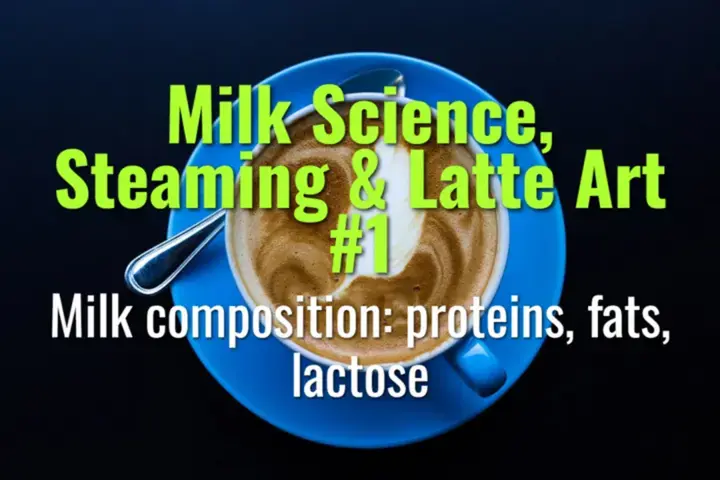Milk composition: proteins, fats, lactose
The chemical composition of milk—proteins, fats, and lactose—and how each contributes to texture, sweetness, and foam in coffee drinks.
- Coffee Basics Nerds
- 1 min read
Article 1 of 12 in Milk Science, Steaming & Latte Art/

Proteins
- Types: Casein (≈80%) and whey proteins (≈20%).
- Role in Steaming:
- Caseins form micelles that stabilize milk foam.
- Whey proteins denature with heat, helping to bind air and water.
- Impact on Latte Art: Stable foam with fine microbubbles creates a smooth canvas.
Fats
- Content: Typically 3–4% in whole milk.
- Role in Mouthfeel: Provides creaminess, body, and richness.
- Impact on Foam:
- Higher fat → richer taste but less stable foam.
- Lower fat → drier, more stable foam but less creaminess.
- Balance: Whole milk offers the best compromise for both latte art and taste.
Lactose
- Definition: Milk sugar (≈4–5%).
- Role in Flavor: Adds natural sweetness, especially as milk is steamed (perceived sweetness increases).
- Caramelization: Lactose does not caramelize like sucrose, but heat enhances perception of sweetness through protein-lactose interactions.
Interactions During Steaming
- Proteins stabilize foam structure.
- Fats influence foam richness and mouthfeel.
- Lactose contributes background sweetness that complements espresso bitterness.
Summary
Milk’s composition determines its performance in coffee: proteins stabilize foam, fats provide body, and lactose gives sweetness. Understanding these components helps baristas steam milk to achieve the right balance of texture, flavor, and latte art potential.